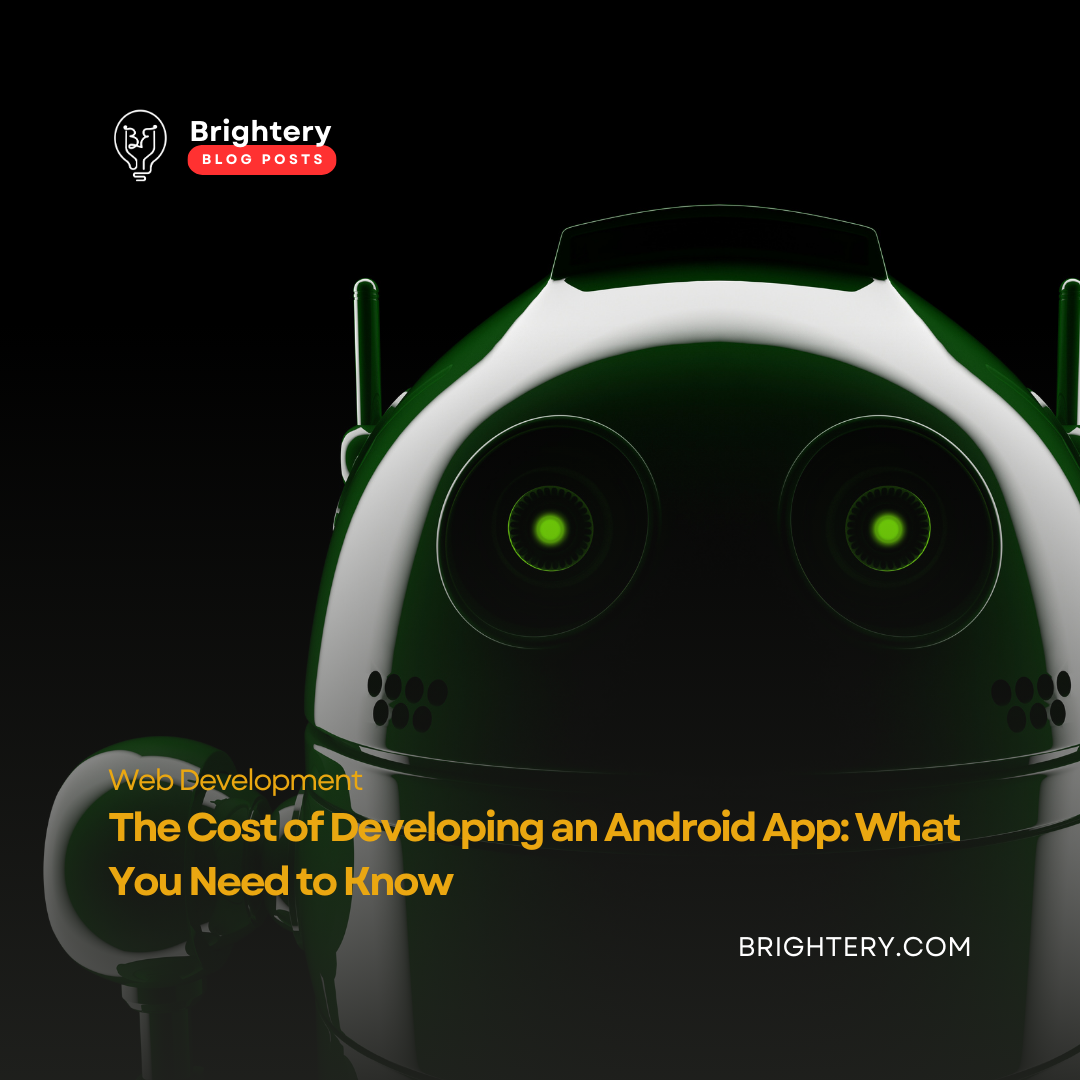The Cost of Developing an Android App: What You Need to Know
When it comes to building an Android app, one of the first questions businesses ask is: "How much is this going to cost?" Well, the answer isn't a simple one. The cost of Android app development can range significantly depending on a variety of factors. But don’t worry—we’re going to break it all down for you, step by step. By the end of this article, you’ll have a clear understanding of the pricing structure, so you can plan accordingly.

Key Factors That Influence Android App Development Cost
1. App Complexity
There’s no one-size-fits-all price tag for app development because it depends on how complex your app is:
- Simple apps: Think of something like a basic informational or personal utility app. These require less development time and minimal backend functionality.
- Medium complexity apps: These apps may have features like user login, notifications, or integration with external APIs. If your app needs a database or real-time data updates, you’re looking at this category.
- Complex apps: High-end apps with features such as real-time syncing, AI, AR/VR, or robust backend support. If you’re aiming to create something like Uber or a social network, prepare to invest heavily in both time and money.
Unlocking the Power of Flutter: The Complete Guide to Cross-Platform Development
2. Features and Functionality
The more features you add, the more expensive your app becomes. Basic features like social media logins or push notifications are relatively standard, but advanced features like payment integration, GPS tracking, or chat functionality can significantly bump up the cost.
3. Design and User Interface (UI/UX)
A clean, intuitive design is key to the success of your app. Standard templates or basic design choices will keep costs down, but if you’re aiming for a custom, polished user interface, that’s going to require more work—and money. Remember, your app’s success often hinges on the user experience, so don’t cut corners here.
Mastering Mobile Application Development: The Ultimate Guide
4. Backend Infrastructure
Does your app need a complex backend system for storing user data or processing transactions? The more complex the infrastructure, the higher the development cost. Cloud storage, database management, and server-side functions will all add to the total price tag.
5. Location of Your Development Team
- North America/Western Europe: The most expensive regions for development, with hourly rates ranging from $50 to $200.
- Asia/South America: Much more affordable, with rates as low as $15 to $50 per hour.
- Eastern Europe: A sweet spot between cost and quality, with rates typically around $25 to $75 per hour.
6. Testing and Ongoing Maintenance
Once the app is built, it's not over yet. You'll need to thoroughly test your app across different devices and OS versions to ensure it works smoothly. After launch, ongoing maintenance—such as bug fixes, updates, and feature enhancements—is crucial to keep your app competitive. Budget for about 20-30% of your development cost for annual maintenance.
Android App Development Price Breakdown
Simple Apps:
- Cost Range: $2,000 to $10,000
- Examples: Utility apps, basic informational apps, or small business applications.
Medium Complexity Apps:
- Cost Range: $10,000 to $50,000
- Examples: E-commerce apps, apps requiring real-time database syncing, or basic social features.
Complex Apps:
- Cost Range: $50,000 to $100,000+
- Examples: On-demand services like Uber, or apps with advanced features like AI, AR, or machine learning integrations.
Other Costs to Keep in Mind
1. App Testing
Testing can add an extra 10-20% to your total development budget, but it’s crucial to avoid a buggy app that will drive users away.
2. Ongoing App Maintenance
Maintenance is often an overlooked aspect. After launch, you’ll need to keep your app updated to remain compatible with new Android versions and address user feedback. Expect to allocate 20-30% of the initial development cost annually for this.
3. Third-Party Services
Many apps rely on third-party services like payment gateways, social media APIs, or mapping services. These can increase both the upfront and ongoing costs, depending on the complexity and licensing fees involved.
How to Reduce Android App Development Costs
- Start With an MVP (Minimum Viable Product): Focus on the core features your app absolutely needs to function. You can always add more features as your app grows.
- Outsource Wisely: Consider outsourcing development to countries with lower hourly rates without sacrificing quality, such as Eastern Europe or Southeast Asia.
- Use Pre-Built Components: Instead of building everything from scratch, use pre-built libraries and frameworks that can significantly cut down development time and cost.
Conclusion
So, how much does it cost to develop an Android app? The answer depends on several factors, but to give you an idea: simple apps can cost anywhere between $2,000 and $10,000, while more complex apps with multiple features can easily surpass $100,000. To get a more accurate estimate, outline your app’s requirements and consult with experienced developers.
FAQs
How long does it take to develop an Android app?
- Depending on the complexity, it can take anywhere from 3 to 12 months.
Is it better to develop for Android or iOS first?
- This depends on your target audience. If you're targeting a global market, Android might be the way to go due to its larger user base.
Can I start with an MVP (Minimum Viable Product)?
- Absolutely! An MVP allows you to test your app with core features before committing to a full-scale development.
What’s the difference in cost between Android and iOS development?
- Both platforms have similar costs, but Android may require more testing due to the wide variety of devices.
How much does app maintenance cost after launch?
- Typically, app maintenance costs 20-30% of the initial development cost annually for updates, bug fixes, and improvements.

0 Comments
Post your comment